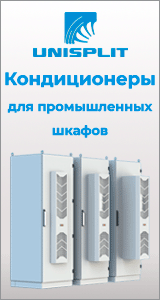Здравствуйте, гость ( Вход | Регистрация )
|
- Стандарт НП «АВОК» 7.11-2024 «Рекомендации по проектированию инженерных систем дошкольных образовательных организаций» |
АВОК в соц. сетях




|
|
ИНН: 7714824045 | erid: 2VtzqwzKQiU |
Сообщений в этой теме
 4aynik Проблема с диагностикой физических адресов 21.2.2011, 17:10 4aynik Проблема с диагностикой физических адресов 21.2.2011, 17:10  andrey R Очень срочно у нас только в мусорке
Дайте теме ... 21.2.2011, 17:16 andrey R Очень срочно у нас только в мусорке
Дайте теме ... 21.2.2011, 17:16  Melnikov Для реальной помощи при данной ситуации требуется ... 21.2.2011, 18:20 Melnikov Для реальной помощи при данной ситуации требуется ... 21.2.2011, 18:20  leonid Как-то все бредово....
О физ. адресе. В ETS занес... 21.2.2011, 18:52 leonid Как-то все бредово....
О физ. адресе. В ETS занес... 21.2.2011, 18:52  Mihail Svirinovsky Если Вы делаете часть большого проекта, то смею пр... 21.2.2011, 20:36 Mihail Svirinovsky Если Вы делаете часть большого проекта, то смею пр... 21.2.2011, 20:36  D. Alexey Очень трудно Вам помочь, так как вы говорите много... 22.2.2011, 11:06 D. Alexey Очень трудно Вам помочь, так как вы говорите много... 22.2.2011, 11:06  4aynik Большое спасибо всем, что ответили и так скоро.
... 22.2.2011, 22:26 4aynik Большое спасибо всем, что ответили и так скоро.
... 22.2.2011, 22:26  D. Alexey Схема начинает проясняться! Проверьте соответс... 23.2.2011, 6:37 D. Alexey Схема начинает проясняться! Проверьте соответс... 23.2.2011, 6:37  leonid Сначала немного политики , потом - по сути...
Есл... 23.2.2011, 16:14 leonid Сначала немного политики , потом - по сути...
Есл... 23.2.2011, 16:14  Melnikov Относительно "эха" от репитера, понимать... 24.2.2011, 9:49 Melnikov Относительно "эха" от репитера, понимать... 24.2.2011, 9:49  lev4ik Сталкивался с данной проблемой! Причём вылечит... 2.6.2011, 22:25 lev4ik Сталкивался с данной проблемой! Причём вылечит... 2.6.2011, 22:25  Nickolai Zaretsky Такое тоже было с физическими адресами (8 линий, 3... 1.11.2011, 8:50 Nickolai Zaretsky Такое тоже было с физическими адресами (8 линий, 3... 1.11.2011, 8:50
1 чел. читают эту тему (гостей: 1, скрытых пользователей: 0)
Пользователей: 0
|
Реклама
Реклама: ООО «СибСтронг» | ИНН 6670013662 | ERID: 2VtzqvdgiCU ООО «УНИСПЛИТ» ИНН: 6453155081 erid:2VtzqwWc8XB Реклама: ООО «СЛ-ЛАЗЕР» ИНН 7727447267 | erid: 2VtzqvEDgM7 Последние сообщения Форума
Книжная полка АВОК
Биржа труда АВОК
|
|||||||||||
|
|

|
Текстовая версия | Сейчас: 25.12.2025, 0:07 |
| Политика ООО ИИП «АВОК-ПРЕСС» в отношении обработки персональных данных |








 21.2.2011, 17:10
21.2.2011, 17:10









